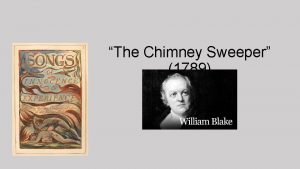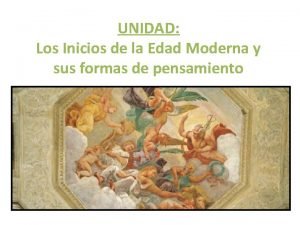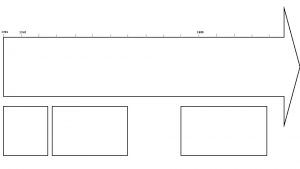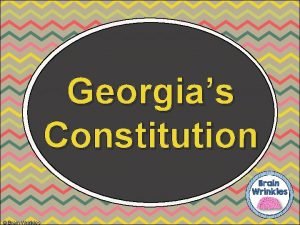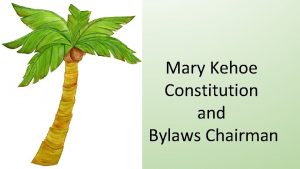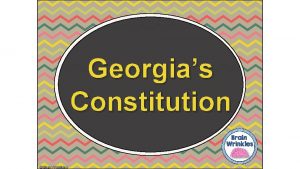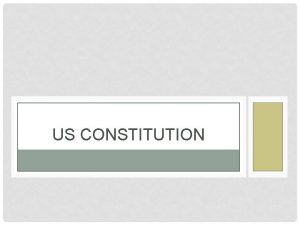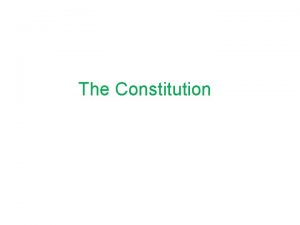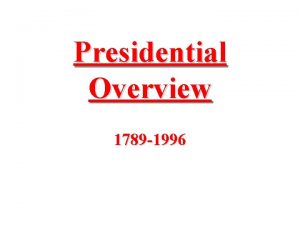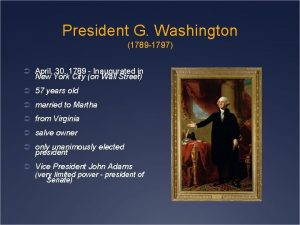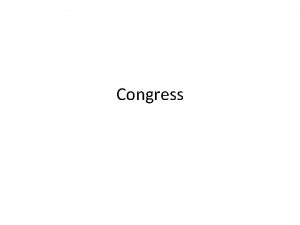Congress Congress Constitution 1789 n n Sources of




















- Slides: 20

Congress

Congress & Constitution (1789) n n Sources of Power: How Should Congress Be Elected? n Lower house: popularly elected n Upper house: sent by state legislatures Powers of Congress n Does Congress elect President? n No, Electoral College does n Yes, when no candidate receives a majority votes in the College

Congress & Constitution (1789) n Powers of Congress n n “Power of the Purse” n Appropriation of money n Authorization of borrowing n taxation Regulatory Power n Regulation of currency n Punishment of counterfeiting n Regulation of inter-state & int’l trade

Congress & Constitution (1789) n Powers of Congress n n Law-making Power n Establishing rules of naturalization n Making patent & copy-right laws n Making bankruptcy laws n Making amendments to Constitution War-making & Military Power n War declaration n Raising & supporting armed forces n Providing for militia

Congress & Constitution (1789) n Powers of Congress n Power of Personnel Appointment n Confirmation of executive appointments n Secretary of State n US ambassador to the UN n Confirmation of federal judge nomination n Federal court judges US Supreme Court justices Power of Impeachment n n Bringing impeachment charges (House) Trying impeachments (Senate)

Congress & Constitution (1789) n Powers of Congress n Other Powers n n n Establishing post office & post roads Fixing weights and measures Providing for the government of D. C. Admitting new states Establishing lower federal courts

Senate vs. the House n Size n 435 members in the House (since 1911) n n n 106 members in 1791 representing 3. 5 million residents 100 Senators in the Senate Qualifications n House n n n n 25 years of age Citizenship for at least 7 years Residency in district: 1 year Term of service: 2 years 1 member per 550, 000 people How often is Congressional election? How many Members face election each time?

Senate vs. House n Congress & Constituency n House of Representatives n n Closer to the voters More reflective of voter preferences More answerable to constituents Senate n More remote to the voters n n Allows for political stability & policy continuity Less responsive to temporal changes in popular sentiments n Can act as a dispassionate counter-weight to the more popular & radical House

Senate vs. House n Qualifications n Senate n n n n 30 years of age 9 years of citizenship Residency requirement in state: 1 year Term: 6 years 2 seats per state in Senate How often is Senatorial election? How many Senators face election each time?

Senate vs. House n Legislative role differences n Senate n More deliberative n n n Why? Less structured House of Representatives n More centralized & organized n n Why? More routine & structured

To run for Congress… n #2: Incumbency Advantages n n Visibility Campaign contributions n n n Donations go to those in office Donations to challengers offend incumbents Credit claiming thru services to individuals & district n Casework n n n Attend to voter concerns, requests and problems Help cut thru bureaucratic red tape to get what one believes he has a right to get Pork barrel n n List of federal projects, grants & contracts Help obtain or make known such projects to district

To run for Congress… n #2: Incumbency Advantages n n Visibility Campaign contributions Credit claiming thru services to individuals & district Incumbent resources n n Institutional connections and access to channels of communications “franking privilege” (free use of the US mails) Tax-funded travel allowance to stay visible in one’s own district Incumbents scaring challengers away *calls for “term limits” aim to eliminate incumbency advantage

Organization of Congress n Political Parties n n n House leader election every two years Majority party leader = House Speaker Every party has a Committee on Committees (Democrats call theirs: the Steering & Policy Committee) n n n Assign new legislators to committees Transfer incumbents to new committees on request Majority & minority leaders jointly control Senate calendars (agenda)

Organization of Congress Committee System Standing Committees n Important policy-making bodies n Existing from Congress to Congress n Paralleling executive agencies n n n Foreign Affairs Committee - State Department Intelligence Committee – CIA & others Having power to report legislation

The caucuses n What is a caucus? Informal group or committee composed of Senators or Representatives who share opinions, interests or social characteristics. n Ideological causes n n Issue-oriented caucuses n n n Liberal Democratic Study Group Travel & Tourism Caucuses Congressional Friends of Animals Common background caucuses n The Congressional Black Caucus

The caucuses n n What is a caucus? Objectives of the Caucuses To advance interests of the groups they represent by promoting legislation, encouraging Congress to hold hearing, and pressing administrative agencies for favorable treatment

How a Bill Becomes Law The Law-making Steps 5. Schedule Debate n n When a committee agrees to submit a bill to the two houses, it is put on the House & Senate calendar, a list bills for action Each house has different calendars for different bills n In House, non-controversial bills are put on the Consent Calendar or Private Calendar to be passed without debate

How a Bill Becomes Law The Law-making Steps 5. Schedule Debate n Each house has different calendars for different bills n Controversial or important bills are placed on the Union Calendar or house Calendar. Rules & procedures (length of debate) are requested from the Rules Committee. Define the following: filibuster, cloture, open rule, closed rule.

Influences from Interest Groups n Mobilize followers in a member’s congressional districts n n “Astroturf lobbying” Provide information

Influences from Party Org n n Party leaders in Congress have influence over members Party organizations have resources: n Leadership PACs n n n n PACs (1) raise funds and then (2) distribute to members for running for election PACs enhance party power PACs create bond between leaders & members who receive money Committee Assignments Access to Floor The whip system communication network, with info on member intentions in voting Logrolling
 The constitution lesson 1 principles of the constitution
The constitution lesson 1 principles of the constitution Texas constitution vs us constitution
Texas constitution vs us constitution Nc constitution vs us constitution
Nc constitution vs us constitution Constitution what is constitution
Constitution what is constitution Print sources and web sources
Print sources and web sources Importance of water sources
Importance of water sources July 14 1789
July 14 1789 Frise républiques françaises
Frise républiques françaises Europa en 1789
Europa en 1789 October 6 1789 french revolution
October 6 1789 french revolution 1789
1789 Who was the first estate
Who was the first estate Symbol of the french revolution
Symbol of the french revolution 1789 france
1789 france Napoleon 1789
Napoleon 1789 Immediate cause of french revolution
Immediate cause of french revolution Political cartoons of the french revolution
Political cartoons of the french revolution The divisions in spanish colonial society 1789
The divisions in spanish colonial society 1789 The chimney sweeper songs of innocence
The chimney sweeper songs of innocence Against the gods 1789
Against the gods 1789 Edades de la historia, línea del tiempo
Edades de la historia, línea del tiempo


















